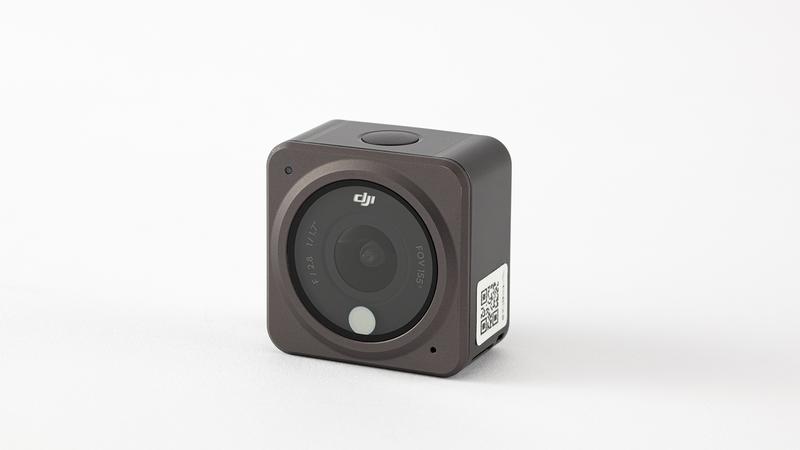The modular action camera "DJI Acti...
06
11
The modular action camera "DJI Action 2" is super lightweight at 56g, but there is one thing to miss: product review
The cube is held in place by two more clips, but they are easy enough to remove even with gloves on. That said, if you're in a snowy area that requires you to wear gloves, it's probably wise not to remove them. Only the camera module is completely waterproof.
For those who dive, don't be discouraged just yet. For $65 (6,050 yen in Japan), a waterproof case that can withstand water depths of 60m is available. However, in that case, the advantage of the magnetic detachable type that it can be easily removed is lost. I am concerned that it is not completely waterproof, but unless it is mainly used underwater, it can not be said to be such a big problem. Of course, if you want to use it mainly underwater, I don't recommend Action 2.
The good thing about this product is that it does not have a hard-to-open lid or cover because it is detachable with a magnet. The camera unit is completely enclosed. You can even switch modules while the power is on and recording. This is something the Insta360 ONE R couldn't do.

However, it should be noted that the built-in battery of the camera module cannot be replaced arbitrarily by the user, so if it deteriorates after several years of use, it will have to be replaced somehow. It is similar to the fact that users can no longer replace the battery of a notebook PC by themselves. I just hope it doesn't become mainstream.
I'm also curious about the lack of a microSD card slot on the main camera unit. It has 32GB of internal storage, but if you want more than that, you'll need to install a power supply module with an SD card slot or a front display module. It's a little inconvenient, but the battery will probably die before you can shoot 32GB of footage.
In the case of 4K footage, I was able to shoot 11-13 minutes with just the built-in battery. The shooting time with the power supply module is much longer, and I was able to shoot for 40 minutes when I actually tried it. Reducing the image quality to 1080p more than doubles the shooting time. Charging is completed in about an hour and a half.
I don't know if DJI will officially approve it, but another benefit of magnetic detachment is that it sticks to anything made of metal. There is no problem even in situations where the tripod cannot be placed because of the metal poles. Just attach the camera directly to the pillar. To be honest, I haven't had a situation where this magnet would be useful recently, but if you want to use it, you can use it. I attached the camera to the front of the oven and shot the kitchen cabinets from the oven's perspective, and I got some pretty interesting shots.
Although some products, including a waterproof case, are not yet available, DJI has a wide selection of accessories for the Action 2. Magnetic headband mounts, tripod mounts, helmet mounts, and more. The most interesting ones I tried were the remote selfie stick/tripod and the macro lens cover. The macro lens cover makes it possible to take close-up shots (however, for some reason the image quality deteriorated slightly when using this).
Performance is adequate
Other than being a little idiosyncratic and easy to use in some situations, Action 2 performs well. Although the video recording performance at the highest image quality 4K / 120fps is not as good as the 5.3K recording of GoPro HERO10 Black, the specs are considerably higher than the first Osmo Action. The only benefit I've felt so far from shooting video at 5.3K is that the 4K image quality is preserved even if you crop the footage later. However, as the number of pixels of monitors and TVs increases in the future, the importance of high-quality video recording will increase.


![[Kill personally developed games] Top class in app history! Too beautiful water puzzle "a [Q] ua" | Famitsu App for smartphone game information [Kill personally developed games] Top class in app history! Too beautiful water puzzle "a [Q] ua" | Famitsu App for smartphone game information](https://website-google-hk.oss-cn-hongkong.aliyuncs.com/drawing/article_results_7/2022/3/3/66755df992ff2d2b1e1ab43844ef9f88_0.jpeg)





![[Latest in 2021] 10 recommended seat covers for cars!If you want to improve the texture and functionality of the car, choose the mounting type and material. [Latest in 2021] 10 recommended seat covers for cars!If you want to improve the texture and functionality of the car, choose the mounting type and material.](https://website-google-hk.oss-cn-hongkong.aliyuncs.com/drawing/article_results_7/2022/3/3/e5b44589e77141f3a633189165fb6f60_0.jpeg)